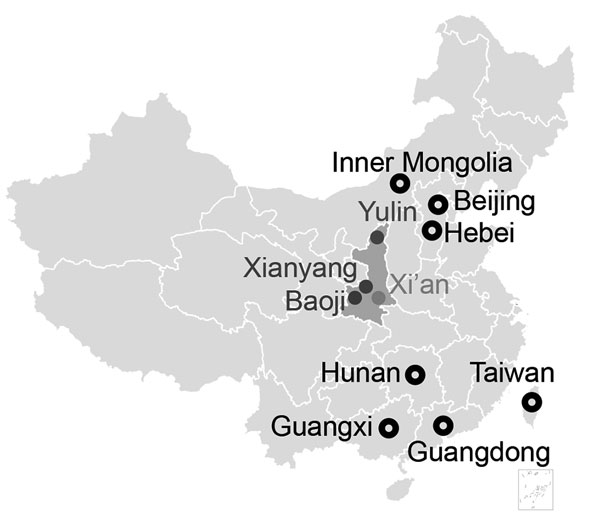Volume 24, Number 6—June 2018
Dispatch
Westward Spread of Highly Pathogenic Avian Influenza A(H7N9) Virus among Humans, China
Figure 2

Figure 2. Geographic distribution of the avian influenza A(H7N9) viruses isolated in Shaanxi Province, China, 2016–2017 (solid circles), and of HPAI H7N9 viruses detected in other provinces of China (open circles).
1These authors contributed equally to this article.
Page created: May 17, 2018
Page updated: May 17, 2018
Page reviewed: May 17, 2018
The conclusions, findings, and opinions expressed by authors contributing to this journal do not necessarily reflect the official position of the U.S. Department of Health and Human Services, the Public Health Service, the Centers for Disease Control and Prevention, or the authors' affiliated institutions. Use of trade names is for identification only and does not imply endorsement by any of the groups named above.